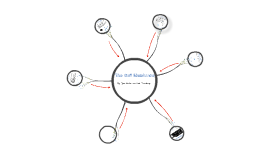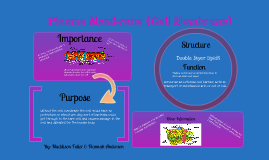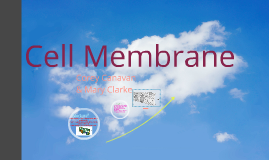Cell Membrane
Transcript: cell structure Holding it all together The plasma membrane The plasma membrane encloses the cell, making it distinct from other cells and from the outside environment. The plasma membrane is vital to the process of homeostasis, or the maintenance of a stable, steady internal environment. The plasma membrane enables this stability because it is selectively permeable. This simply means that the membrane controls what can enter or exit the cell. Useful nutrients are selectively allowed entrance while waste materials are selectively allowed to leave. Phospholipid membranes are fluid structures, similar in consistency to cooking oil. As you can see in the pictures, the plasma membrane is largely made up of molecules called phospholipids. Each phospholipid has a phosphate head and lipid tails. The head portion is hydrophilic, meaning that it interacts well with water. The tails are hydrophobic, avoiding contact with water. As a result, the phospholipids organize themselves into a phospholipid bilayer, with heads pointing outward and tails hidden away from the watery cytosol or extracellular (outside-the-cell) environment. Cholesterol molecules embedded in the bilayer help to maintain this fluidity. Also embedded within the bilayer are membrane proteins that act as gatekeepers, enforcing the selective permeability of the membrane. This description of the plasma membrane, with membrane proteins moving freely along the membrane, is called the fluid mosaic model The membrane that encloses and define all cells as seperate from the enviroment is called the plasma membrane or cell membrane The job of the plasma membrane is to seperate the chemical reactions occuring inside the cell from the chemicals outside The fluid inside the cell, called the cytoplasm, contains all the organelles and is very different from (cyto = cell) and (plasm = shape) cytoplasm literally means cell shape - fitting as the plasma membrane is what defines the cell shape plasma membrane are made of several different components, much like a mosaic work of work because membranes are a mosaic, and because they are flexible and fluid, scientists call them a 'fluid mosaic model'. TIP: Remember the plasma membrane as an international border controlling what enters or leaves the a particular country is a good way of remembering the plasma membrane in each cell the hydrophilic heads point towards watery environments (outside and inside the cell) sandwitching the hydrophobic bilayers Because cells reside in watery solutions (extra cellular matrix) and because they contain a watery solution inside of them (cytoplasm), the plasma membrane forms a sphere around each cell - so the water attracting heads are in contact with fluid and water repelling ttails are protected on the inside Other Components In addition to phospholipids, proteins play a major component of plasma membranes The proteins are embedded in the phospholipid layer, but they can drift laterally - like ships sailing in an oily ocean Cholesterol and carbohydrates are minor components of plasma membrane but they play fairly significant roles Cholesterol makes your membrane stable and prevents it from solidifying when your body temperature is low Carbohydrate chains attach to the outer-surface of the plasma membrane on each cell When they attach to the to phospholipids they form glycolipids - when they attach to the proteins they form glycoproteins Your DNA determines which specific carbohydrates attach to your cells, affecting characteristics such as your blood type Nuclear membrane The nucleus is limited by its nuclear membrane, which is a phospholipid bilayer interrupted at intervals known as nuclear pores The gaps provide direct communication between the nucleus and the cytoplasm It is difficult to overstate the importance of membranes to living cells; without them life could not exist. The plasma membrane, also known as the cell surface membrane or plasmalemma, defines the boundary of the cell. It regulates the movement of materials into and out of the cell and facilitates electrical signaling between cells. Straight Through the Membrane: Diffusion Through the Bilayer Molecules of oxygen are uncharged. Although they dissolve readily enough in water, they are also able to dissolve in the hydrophobic interior of lipid bilayers. Oxygen molecules can therefore pass from the extracellular fluid into the interior of the plasma membrane, and from there pass on into the cytoplasm, in a simple diffusion process Three other small molecules with important roles in biology—carbon dioxide, nitric oxide, and water itself—also pass across the plasma membrane by simple diffusion, as do the uncharged hormones of the steroid family. In contrast, charged ions cannot dissolve in hydrophobic regions and therefore cannot cross membranes by simple diffusion. http://www.biologymad.com/cells/cellmembrane.htm Passively moving along Importance TRANSPORT Actively helping molecules across Osmosis: Osmosis is simply the

















